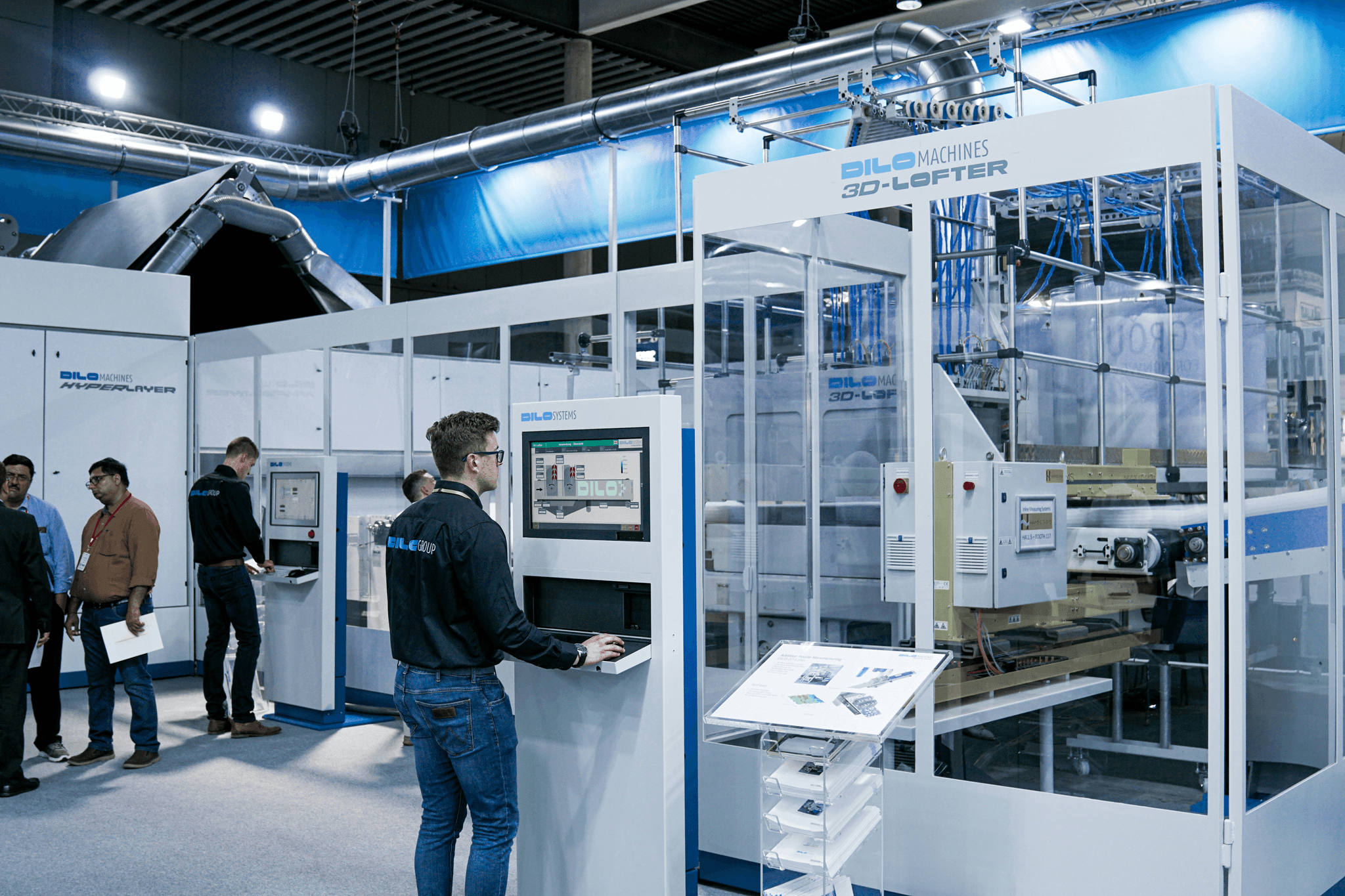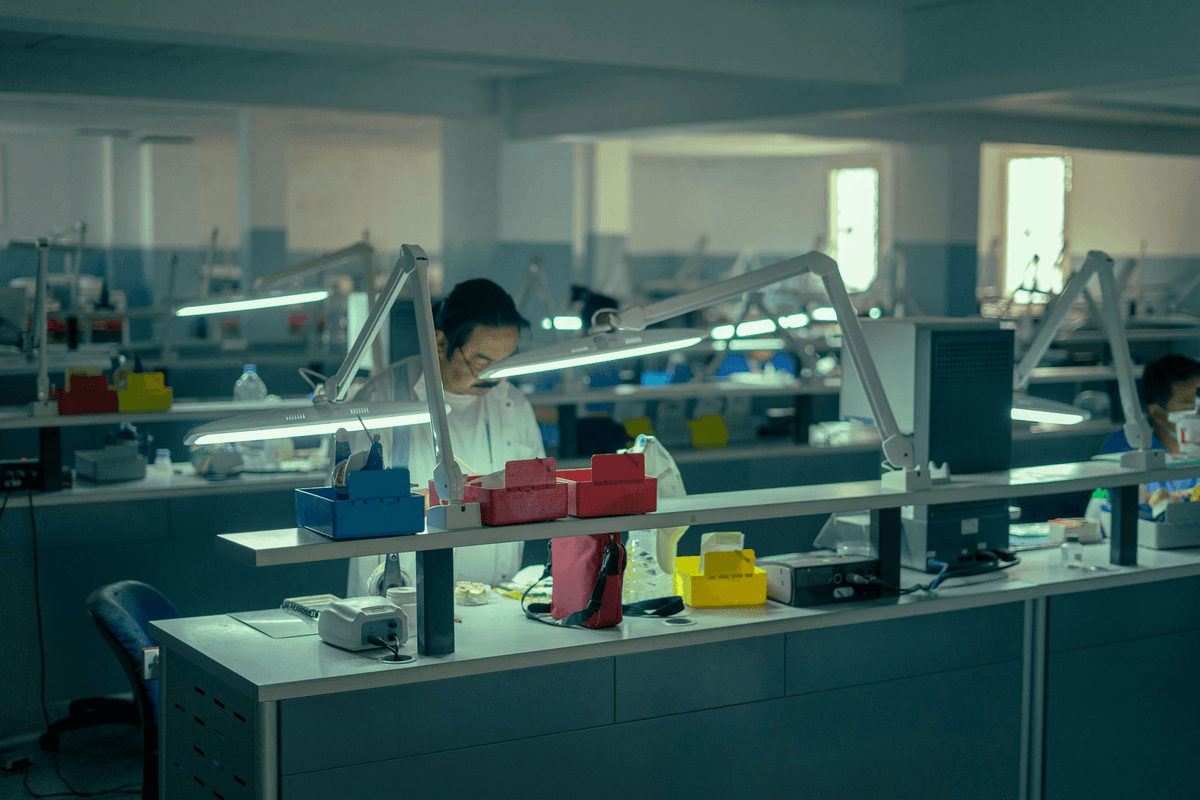Introduction

In the world of manufacturing, ensuring product quality is paramount, and minimizing product inspection mistakes can mean the difference between success and failure. A single misstep in the inspection process can lead to significant financial losses, brand damage, and dissatisfied customers. Therefore, understanding common pitfalls—such as misunderstanding or misinterpreting the product requirements and using unsuitable measuring equipment—is essential for maintaining high standards.
Importance of Minimizing Product Inspection Mistakes
Minimizing product inspection mistakes not only safeguards a company's reputation but also enhances operational efficiency. When errors occur during inspections, they can cascade into larger issues down the line, affecting everything from production schedules to customer satisfaction. By prioritizing accurate inspections, businesses can avoid costly recalls and foster trust with their clients.
Overview of Common Errors in Inspections
Common errors in inspections often stem from several key areas: misunderstanding or misinterpreting the product requirements, bad influence from factory officials, and inadequate sampling sizes like using wrong AQL sampling size. These mistakes can lead to faulty products making their way to market or delays that disrupt supply chains. Recognizing these pitfalls is crucial for companies aiming to refine their quality assurance processes.
The Role of China Inspection Pro in Quality Assurance
China Inspection Pro plays a vital role in helping businesses navigate the complexities of product inspections by providing expert guidance and support throughout the process. They specialize in addressing common issues such as lack of sufficient photos in inspection reports and ensuring that proper measuring equipment is utilized effectively. With their assistance, companies can significantly reduce the likelihood of product inspection mistakes while enhancing overall quality assurance efforts.
Understanding Product Requirements

In the realm of product inspections, a clear understanding of product requirements is paramount. Misunderstanding or misinterpreting the product requirements can lead to significant inspection mistakes that ultimately compromise quality assurance. Without a solid grasp of these specifications, inspectors may overlook critical details, leading to costly errors and dissatisfied customers.
Misunderstanding or Misinterpreting the Product Requirements
One of the most common pitfalls in product inspections is misunderstanding or misinterpreting the product requirements. This can stem from vague documentation or inadequate communication between stakeholders involved in the manufacturing process. When inspectors are unclear about what constitutes acceptable quality, it opens the door to various Product Inspection Mistakes that can have lasting repercussions on brand reputation and customer trust.
Moreover, such misunderstandings often arise when specifications are not standardized across all parties involved in production. For example, if a factory interprets size tolerances differently than what was intended by the client, it could result in products that fail to meet market expectations. Thus, ensuring everyone is on the same page regarding product requirements is essential for minimizing risks associated with inspection errors.
Best Practices for Clarity in Requirements
To mitigate misunderstandings related to product requirements, implementing best practices for clarity is crucial. First and foremost, creating detailed and specific documentation can help eliminate ambiguity; this includes clear definitions of materials, dimensions, tolerances, and expected performance standards. By providing comprehensive guidelines upfront, businesses can significantly reduce instances of misinterpretation during inspections.
Additionally, regular communication between manufacturers and inspectors fosters an environment where questions can be asked freely and clarifications provided promptly. Utilizing visual aids such as diagrams or prototypes during discussions can also enhance understanding among all parties involved in production processes. These proactive measures help ensure that everyone has a shared vision of what constitutes compliance with quality standards.
Case Studies of Misinterpretations
Examining real-life case studies reveals how misinterpretations have led to significant inspection failures over time. One notable instance involved a company that produced electronic devices; their specifications indicated specific voltage outputs but failed to clarify acceptable tolerances explicitly. As a result, inspectors overlooked minor deviations during evaluation due to their assumption about voltage ranges—leading to multiple recalls after customers reported malfunctions.
Another case highlighted issues stemming from ambiguous color specifications for consumer goods; factories interpreted red differently based on cultural contexts and local dye availability—resulting in products that did not match buyer expectations upon delivery. Such examples underscore how crucial it is to communicate clearly defined parameters within product requirements effectively while also emphasizing how easily Product Inspection Mistakes can occur without proper guidance.
Choosing the Right Measuring Equipment
Selecting the right measuring equipment is crucial in avoiding product inspection mistakes that can lead to costly errors. The effectiveness of an inspection heavily relies on the tools being used, as unsuitable measuring equipment can skew results and compromise quality assurance. Understanding how to choose the appropriate tools ensures that inspections are thorough and reliable.
Use of Unsuitable Measuring Equipment
Using unsuitable measuring equipment is a common pitfall that often leads to product inspection mistakes. When inspectors rely on tools that are not designed for specific measurements or materials, they risk miscalculating dimensions or tolerances, which can result in significant quality issues. This misalignment with product requirements not only affects the immediate inspection but can also lead to long-term repercussions for manufacturers and consumers alike.
Tips for Selecting Appropriate Tools
To avoid the pitfalls associated with using unsuitable measuring equipment, it’s essential to follow a few best practices when selecting tools. First, always match your measuring devices to the specific requirements of the product; this means understanding both what you’re inspecting and what tools are necessary for accurate measurement.
Real-Life Impacts of Measurement Errors
The real-life impacts of measurement errors can be profound and far-reaching, often leading to increased costs due to returns or rework. For instance, if a manufacturer uses inappropriate measuring tools resulting in incorrect dimensions, they might produce parts that fail quality checks—a scenario all too familiar in many industries plagued by misunderstanding or misinterpreting the product requirements. These errors not only affect production timelines but also damage relationships with clients who expect consistency and reliability; ultimately underscoring why proper tool selection is non-negotiable.
Navigating Factory Relationships
While collaboration is essential, it also opens the door to potential pitfalls, especially when dealing with bad influences from factory officials. These influences can lead to product inspection mistakes that compromise quality and ultimately affect your bottom line.
Bad Influence from Factory Officials
Factory officials wield significant power over the inspection process, and their influence can sometimes skew results. For instance, they might pressure inspectors to overlook certain issues or downplay defects in order to maintain a good relationship or meet production quotas. This bad influence not only leads to misunderstanding or misinterpreting the product requirements but also raises the risk of using unsuitable measuring equipment that fails to capture critical data.
Strategies to Maintain Objectivity
To counteract these influences, it's crucial to establish clear boundaries and maintain objectivity throughout the inspection process. One effective strategy is to implement a third-party inspection service that operates independently of factory officials; this helps ensure unbiased assessments and accurate reporting.
Examples of Conflicts of Interest
Conflicts of interest often arise when factory officials have personal stakes in the outcomes of inspections or when they prioritize profit over quality assurance. For example, an inspector might face pressure from a factory manager who stands to gain financially from passing subpar products due to use of wrong AQL sampling size or lack of sufficient photos in the inspection report. Such scenarios highlight why transparency and accountability are non-negotiable in maintaining high-quality standards during product inspections.
Sampling Size Matters

When it comes to product inspection, the sampling size is a critical factor that can make or break the entire quality assurance process. Unfortunately, many companies fall into the trap of using the wrong AQL (Acceptable Quality Level) sampling size, leading to significant product inspection mistakes. This oversight can result in either overestimating or underestimating defects, ultimately impacting customer satisfaction and brand reputation.
Use of Wrong AQL Sampling Size
Using the wrong AQL sampling size can create a cascade of issues in inspections. For instance, if a company uses a smaller sample than necessary, they may miss detecting critical defects that could lead to costly recalls later on. Conversely, too large of a sample can waste time and resources while still failing to reveal underlying issues due to random variability in product quality.
To avoid these pitfalls, it's essential for teams involved in inspections to understand how AQL works and its implications on their specific products. Misunderstanding or misinterpreting the product requirements often leads teams astray when determining appropriate sample sizes. This mistake not only complicates the inspection process but also diminishes trust between manufacturers and consumers.
How to Determine the Right Sample Size
Determining the right sample size requires careful consideration of several factors including batch size, defect rate expectations, and overall risk tolerance for defects. Companies should utilize statistical methods and guidelines that outline how to calculate an appropriate AQL based on their specific circumstances. Engaging with experts from organizations like China Inspection Pro can provide valuable insights into best practices for selecting an effective sample size.
It's also crucial for teams to periodically review their methodologies as production processes evolve over time; what worked previously may not hold true today due to changes in manufacturing techniques or materials used. Collaborating with factory officials is important but be wary of bad influence from factory officials who might downplay defect rates or suggest inappropriate sampling sizes just to expedite inspections.
Consequences of Inaccurate Sampling
The consequences of inaccurate sampling are far-reaching and can severely impact both product quality and business operations. If a company consistently employs an inadequate sampling strategy—whether through using the wrong AQL or failing to document findings thoroughly—it risks delivering subpar products that do not meet customer expectations. This not only leads to financial losses from returns but also damages brand loyalty over time.
Moreover, lack of sufficient photos in the inspection report can exacerbate these issues by leaving stakeholders without clear evidence regarding product conditions at various stages of production. Without proper documentation and transparency in inspections, businesses may struggle with accountability when problems arise post-delivery—ultimately leading back to those pesky product inspection mistakes we’re trying so hard to avoid!
Documenting Inspections Thoroughly

When it comes to product inspections, thorough documentation is crucial to avoid common pitfalls. One of the most glaring product inspection mistakes is the lack of sufficient photos in the inspection report. Without visual evidence, it becomes challenging to validate findings and make informed decisions about quality assurance.
Lack of Sufficient Photos in the Inspection Report
A common oversight during inspections is not capturing enough photographic evidence. Insufficient photos can lead to misunderstandings or misinterpreting the product requirements, as stakeholders may rely solely on written descriptions. This lack of clarity can result in costly errors and disputes down the line, emphasizing the importance of a well-documented visual record.
Additionally, when inspectors fail to provide ample photographic evidence, they risk leaving room for doubt regarding their findings. This situation can be exacerbated by bad influence from factory officials who might downplay issues that need addressing. Ultimately, without adequate imagery, critical defects may go unnoticed until it's too late.
Importance of Comprehensive Recording
Comprehensive recording during product inspections serves as a safeguard against various inspection mistakes. By meticulously documenting every detail—whether through photographs or written notes—inspectors create a reliable reference that helps mitigate misunderstandings or misinterpretations later on. This thoroughness not only enhances transparency but also fosters trust between manufacturers and clients.
Moreover, comprehensive records allow for better analysis and evaluation over time; they provide insights into recurring issues like the use of unsuitable measuring equipment that could compromise quality standards. When all aspects are documented effectively, teams can identify trends and implement corrective measures proactively rather than reactively after problems arise.
In essence, detailed documentation acts as an insurance policy against future disputes while ensuring all parties are aligned with expectations regarding quality assurance processes.
Tools and Techniques for Effective Documentation
To achieve effective documentation during inspections, utilizing various tools and techniques is essential. Digital cameras or smartphones equipped with high-resolution capabilities are great for capturing clear images that highlight potential defects or adherence to specifications—critical when addressing issues like using wrong AQL sampling size in assessments.
Additionally, employing software solutions designed for inspection reporting can streamline documentation efforts significantly. These tools often include templates that prompt inspectors to cover all necessary areas thoroughly while enabling easy sharing among team members—helping everyone stay informed about potential product inspection mistakes before they escalate into larger problems.
Lastly, training inspectors on best practices for documenting their findings ensures consistency across reports—a vital step toward achieving comprehensive recording standards within any quality assurance framework.
Conclusion

In the world of quality assurance, avoiding product inspection mistakes is paramount to maintaining high standards and customer satisfaction. By understanding the common pitfalls—such as misunderstanding or misinterpreting the product requirements, using unsuitable measuring equipment, and falling victim to bad influences from factory officials—we can significantly enhance inspection processes. A proactive approach not only mitigates risks but also ensures that products meet expectations before they reach consumers.
Key Strategies to Avoid Inspection Mistakes
To circumvent product inspection mistakes, clarity in communication is crucial. This begins with ensuring that all stakeholders have a shared understanding of the product requirements; misunderstandings or misinterpretations can lead to costly errors down the line. Additionally, selecting appropriate measuring equipment tailored for specific products can drastically reduce measurement discrepancies and enhance accuracy.
Another vital strategy involves maintaining transparency in factory relationships to counteract any potential bad influence from factory officials. Building a culture of accountability where inspectors feel empowered to voice concerns will help maintain objectivity during inspections. Lastly, determining the right AQL sampling size is essential; using the wrong size could skew results and lead to significant oversights.
The Value of Professional Inspections
Professional inspections offer an invaluable layer of quality assurance that cannot be overstated. Trained inspectors are adept at spotting issues that may go unnoticed by less experienced eyes, thereby minimizing product inspection mistakes effectively. They also bring specialized knowledge about suitable measuring equipment and best practices for documentation, ensuring thoroughness in every report.
Moreover, professional inspectors understand how to navigate complex factory relationships without succumbing to bad influences from factory officials. Their expertise allows them to maintain impartiality while fostering constructive dialogue between parties involved in production processes. Ultimately, investing in professional inspections leads not only to higher quality products but also builds trust among manufacturers and consumers alike.
Final Thoughts on Quality Assurance with China Inspection Pro
Quality assurance is a multifaceted endeavor that demands diligence at every stage of production—from understanding requirements clearly to documenting findings comprehensively with sufficient photos in inspection reports. By addressing common pitfalls like misunderstanding product requirements or utilizing unsuitable measuring equipment, companies can avoid costly errors associated with product inspection mistakes altogether.
China Inspection Pro stands out as a partner committed to delivering excellence through meticulous attention to detail and unwavering professionalism in inspections—ensuring that your products meet market standards consistently while minimizing risk factors such as wrong AQL sampling sizes or inadequate documentation practices.
